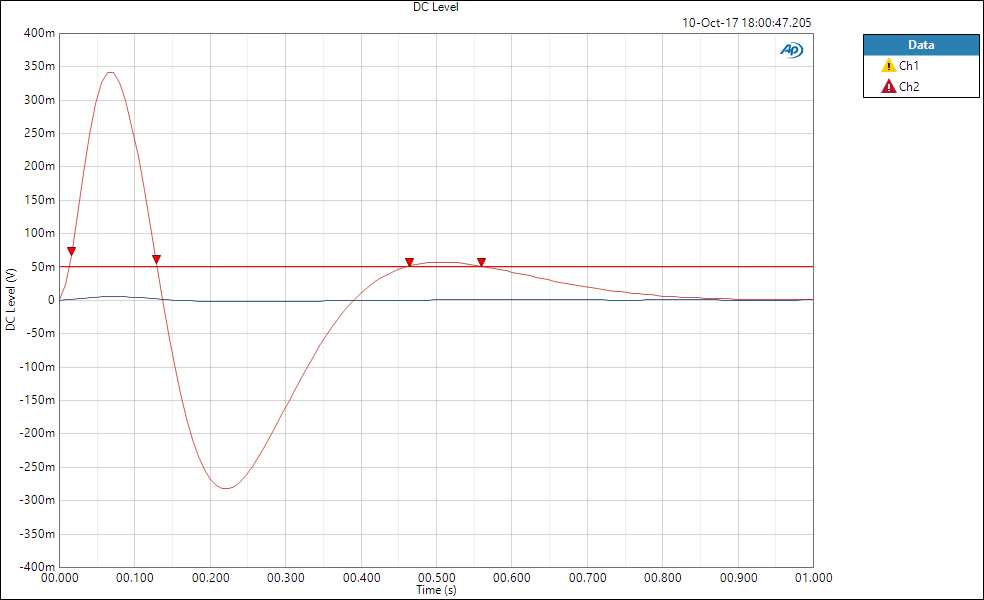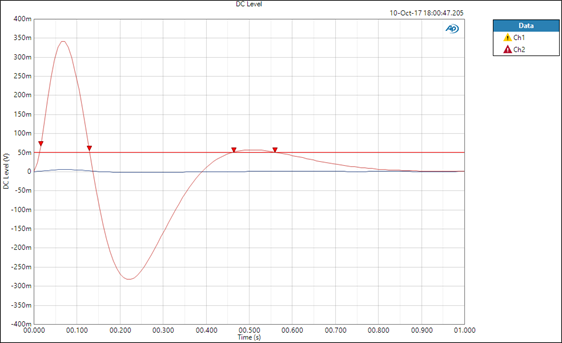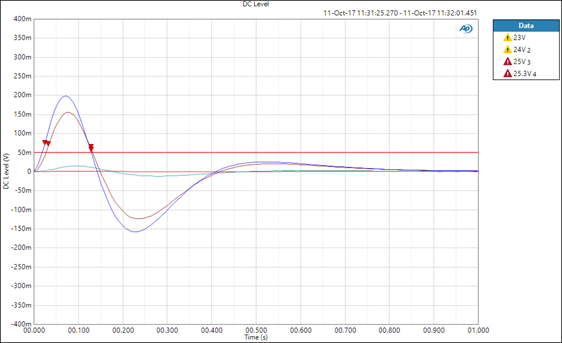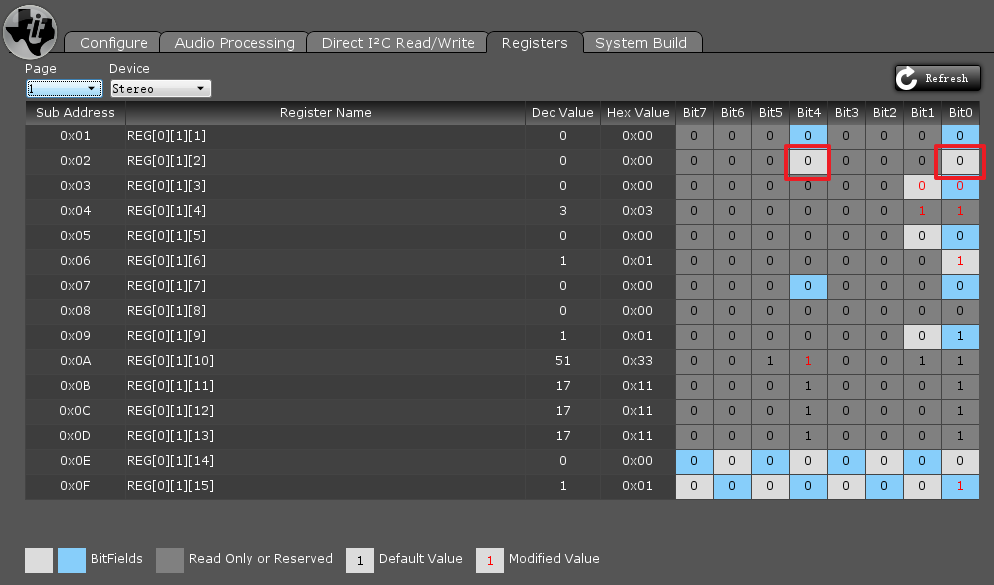Other Parts Discussed in Thread: TAS5756M
Hello Team,
our customer found following behavior:
What we noticed is that during loud music/power transients, the woofer cone moves outward significantly and very visibly and returns with a time constant of about 1 second. This looks quite worrying, for the sake of woofer longevity as well as public perception.
In measurement we can reproduce this on a dummy load by generating a tone burst at ~300 Hz, -10dBFS (level such that the sine wave itself is just about clipping), and recording the DC output.
The woofer has a nominal impedance of 6 Ohms which we match with the dummy load.
Additionally, we see that the 300Hz sine wave itself is very asymmetrical and goes further negative than positive and seems to move around DC, as if a servo feedback loop is trying to catch.
This was unexpected from understanding the theory of BD modulation so perhaps it could be a side effect of the '54Ms different modulation scheme w.r.t. the '56M?
We've double- and triple checked our Hybridflow tuning and programming by the microcontroller. The fact that it's reproducable even with a blank hybridflow on the eval board leads suspicion to the hardware itself.
The issue is related to die core temperature as it is easier provoked after the amplifier has been running full power for a while, or at elevated power supply levels.
We can also observe a cold amplifier behaving well until warm up, and influence the 'stable' period with the thermal mass of the cooling solution. Eventually however, this behaviour may be consistently provoked.
When the amplifier is unloaded, the onset of clipping is symmetrical and the DC 'overshoot' is less than 20 mV, which is innocent. However, we prefer the amplifier with a nice loudspeaker as a load...
Many Thanks
Josef







